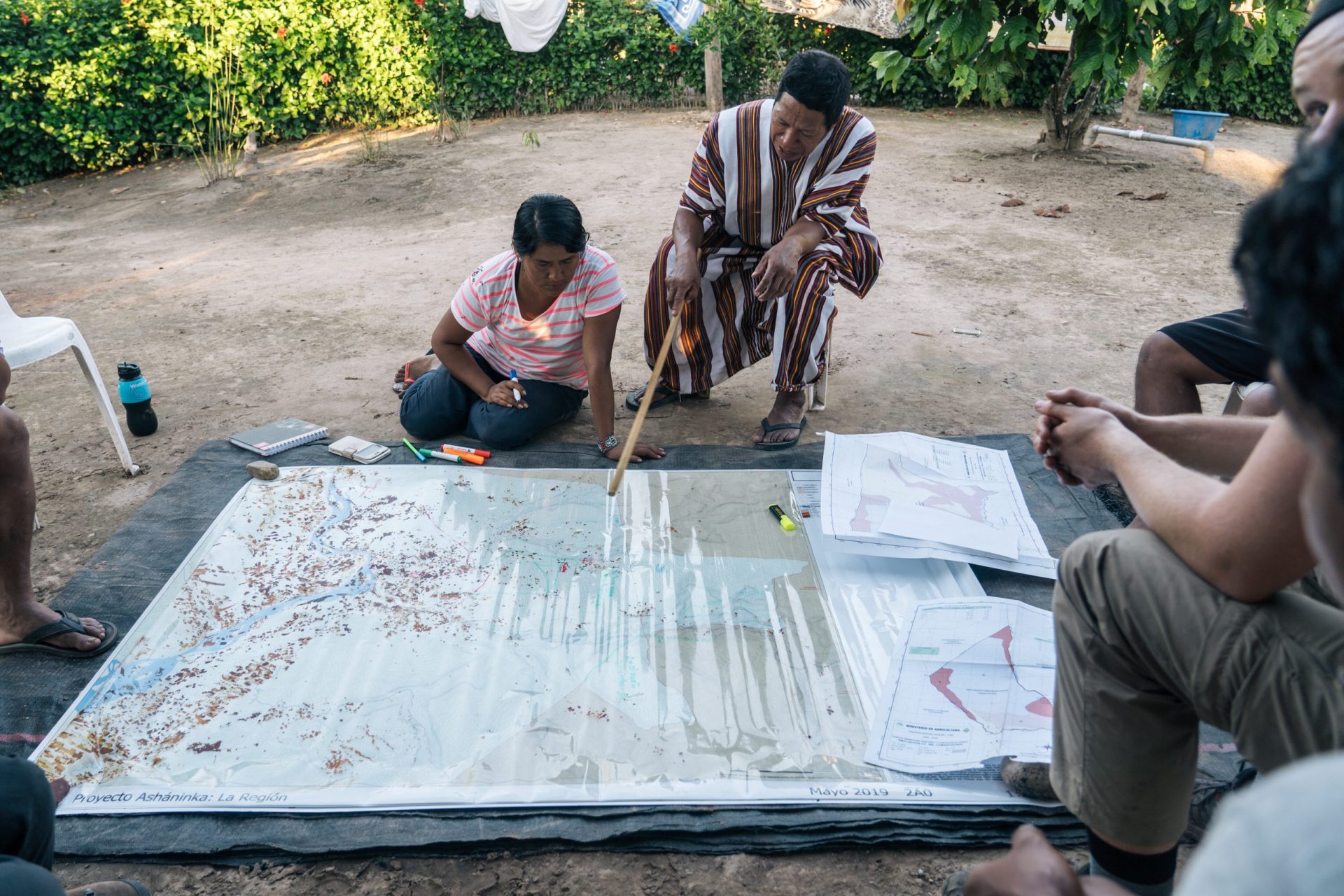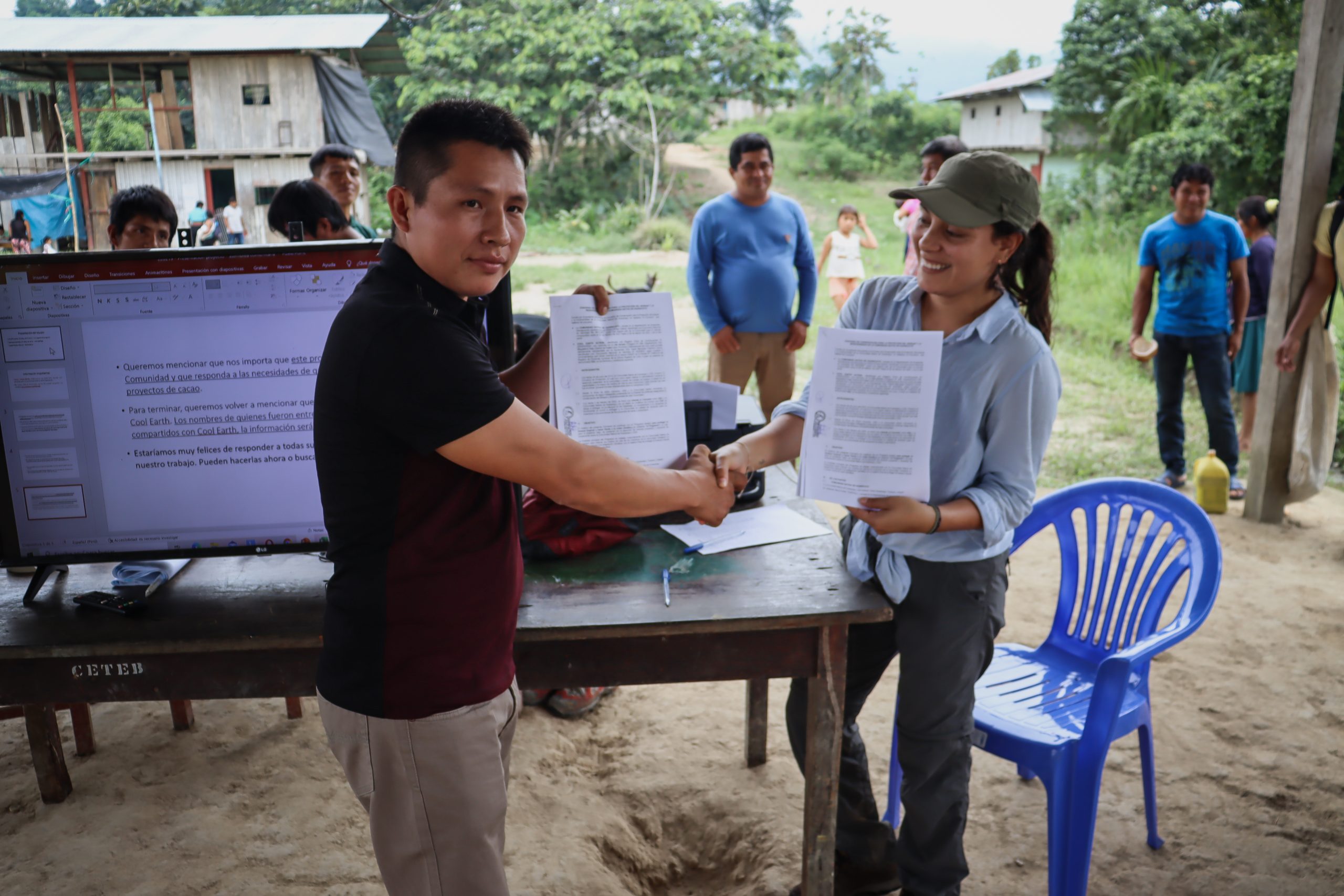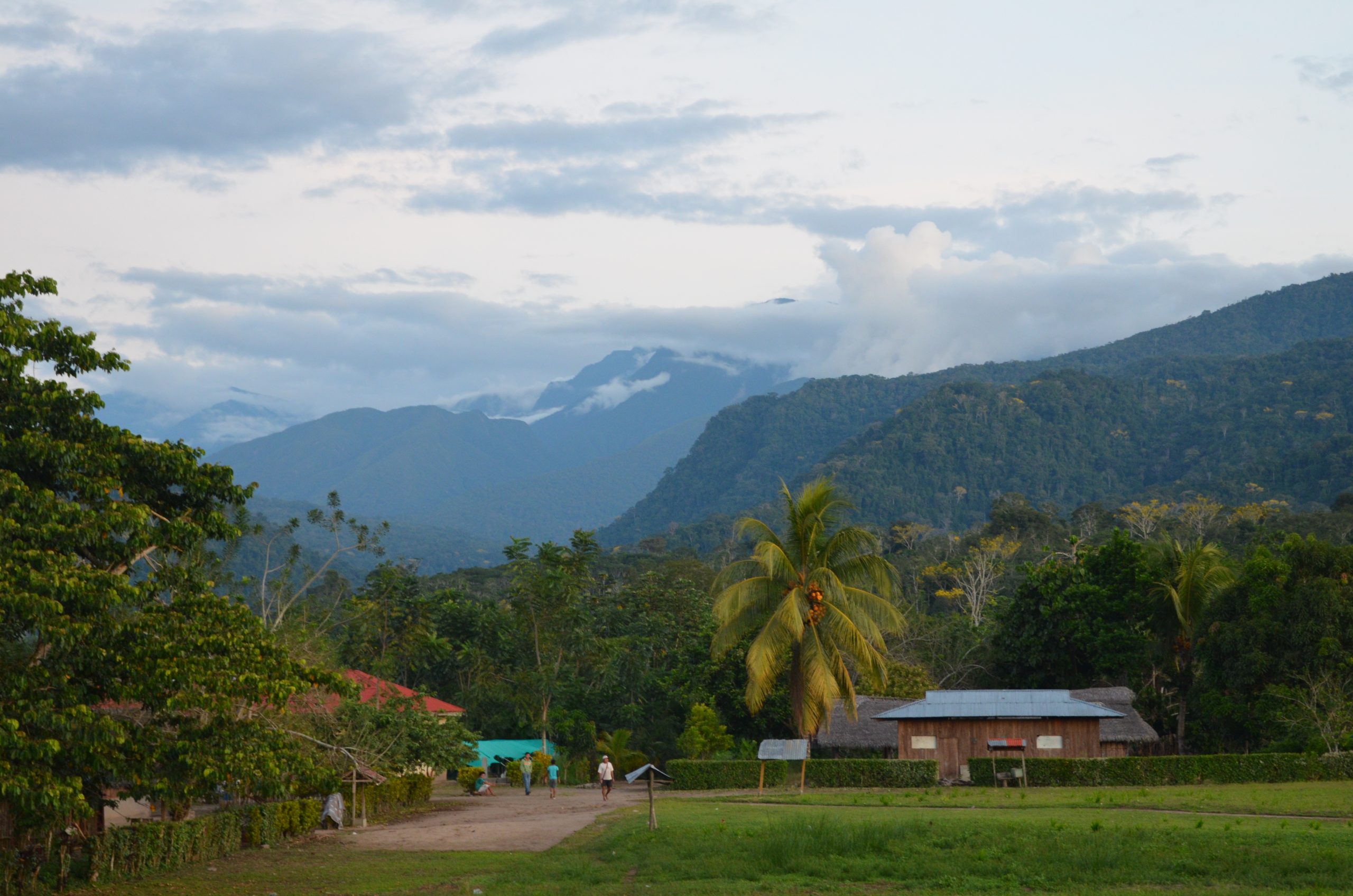The best method to protect rainforests
A question we often get asked is: “Why is what you do better than other methods to protect rainforests? ”.
The simple answer is, that it just makes sense. It’s fair to people and the “natural” world.
Many of us have never visited the rainforest, let alone do we know how to protect it. Thankfully, we’ve partnered with those who do: the Indigenous peoples and local communities who live in rainforests.


Jaime, Cutivireni resident, at a participatory mapping exercise with the Cool Earth team.
Why do we back Indigenous Peoples and Local Communities?
What is clear is that the most cost-effective way to fight the climate crisis is to keep the best carbon-storing technology we already have, the rainforest, standing and sequestering.
If you’re going to trust anyone to protect rainforests, why would it not be the people who have lived in and coexisted with it for millennia and who have historically been the best at shaping and stewarding it?
People are part of the rainforest. For people living there, the forest is a crucial part of daily life. The rainforest is their supermarket, their pharmacy, their place of spirituality and it provides materials for their homes. A healthy rainforest is vital for their livelihoods. And, healthy livelihoods are vital for the rainforest.
Despite doing so much for the planet, their efforts go virtually unrecognised. One of the main drivers of rainforest deforestation is marginalisation. In economic terms, Indigenous Peoples and local rainforest communities represent 15% of the world’s poorest people. When the forest is the only economic resource you have left to barter with, people are left with no choice but to sell their land.
And when people are not at the heart of conservation?
Projects can go drastically wrong.
Protected national parks, conservation zones, fenced-off reserves, armed rangers on patrol, buying land and “Keep Out” signs, are all traditional methods that conservation organisations and individuals have implemented to try and protect rainforests, safeguard endangered species and restore biodiversity. The logic behind it: If people cannot enter the forest then they can not destroy it either.
But, these methods leave the people who live in rainforests out of the picture.
It is a human rights violation to exclude Indigenous Peoples from conservation plans and efforts. Projects have implemented military-style operations to evict and remove Indigenous Peoples from their ancestral land, control and limit their movements, cultural practices and their use of forest resources, leading to civil unrest. Just some global examples detailing where conservation efforts have failed Indigenous Peoples and Local Communities can be found in our reference list below.
What are we doing?
Everything we do is centred around the people we partner with and what they as individuals and communities want and need. There are so many nuances in each area Cool Earth is present, from a community’s culture and practices to the threats facing their forest.


A community-led project: Robin, chief of Huaracayo Community and Isabel, Peru Programme Manager, signing the forest agreement for 2022.
To give you an idea, here is a non-exhaustive list of projects in action across our 14 partnerships:
🤝 Our partnerships with expert and local organisations, including; CARE (in the Peruvian Amazon creating fire prevention strategies), ONAMIAP (in the Peruvian Amazon to build our cash transfers pilot), Cadasta (a global partnership to build our Rainforest Labs project), the United Church Papua New Guinea (UCPNG) (Water, Sanitation and Hygiene Project in PNG) and OELO (Running the Our Forest, Our Future project in Gabon).
💵 Livelihood projects such as cacao farming and product production in Peru and regenerating coconut plantations in PNG.
✏️ Projects that improve education such as the adult education program in PNG and the agricultural education project in the Peruvian Amazon.
The proof is in the pudding
Research, including by Cool Earth, finds that forest loss is reduced on land managed by Indigenous Peoples compared to surrounding unmanaged areas. For example between 2011 and 2021 forest loss rates in Cool Earth Partnerships were up to 82% lower forest loss than those in the surrounding areas.
Currently, Cool Earth and our partner organisations support over 30,000 people across Peru, Papua New Guinea, the Democratic Republic of Congo, Gabon and Cameroon, protecting over 280,000 hectares of forest that store over 242 million tonnes of carbon combined.
Supporting Indigenous Peoples and Local Communities across the rainforest is not only an efficient and effective method of climate change mitigation and rainforest protection but more importantly a contribution towards pushing the conservation movement in the direction of justice and equity.
If you want your donation to have the multi-dimensional impact it deserves, join us in putting Indigenous Peoples and Local Communities at the heart of all climate action.

Want to take a deeper dive? Check out our references:
Indigenous Peoples & Local Communities and protecting rainforest:
- Dawson, N., et al. 2021. The role of Indigenous peoples and local communities in effective and equitable conservation. Link
- FAO and FILAC. 2021. Forest Governance by Indigenous and Tribal People. An Opportunity for Climate Action in Latin America and the Caribbean. Link
- Garnett, S.,et al. 2018. A spatial overview of the global importance of Indigenous lands for conservation. Link
- Soanes, M., et al. 2017. Delivering real change: getting international climate finance to the local level. Link
- Sze, J.S., et al. 2022. Reduced deforestation and degradation in Indigenous Lands pan-tropically. Link.
- Massarella, K., et al. 2023. Convivial Conservation: From Principles to Practice. Link
- Mongabay. 2021. Indigenous people get less than 1% of climate funding? It’s actually worse (commentary). Link
Conservation and human rights violation examples:
- Amnesty International. 2021. Nepal: Indigenous peoples the silent victims of country’s conservation ‘success story. Link
- Buzz Feed News. 2019. WWF Funds Guards Who Have Tortured And Killed People. Link
- Mongabay. 2022. Indigenous-led report warns against ‘simplistic take on conservation’. Link
- Mongabay. 2023. Militarized conservation: Insecurity for some, security for others? Link
- The Guardian. 2023. Revealed: more than 90% of rainforest carbon offsets by biggest certifier are worthless, analysis shows. Link
- United Nations, 2016. Indigenous peoples’ rights violated in the name of conservation. Link
